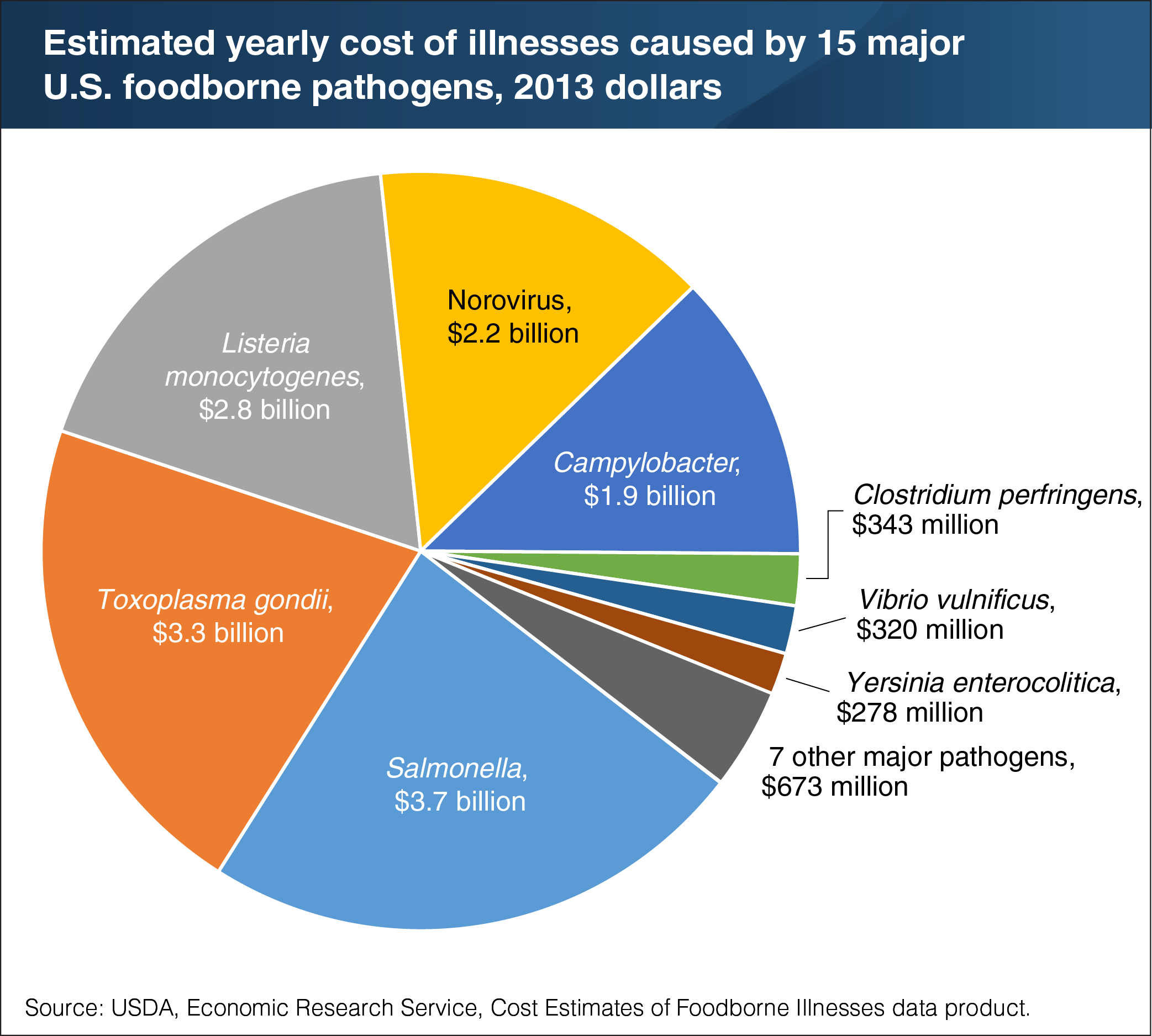Salmonella and Toxoplasma gondii are the costliest U.S. foodborne pathogens
- by Sandra Hoffmann
- 3/29/2018

Estimates of the economic cost of foodborne illness play an important role in guiding food safety policy. They are used by the Federal Government in cost-benefit analysis of regulatory actions. Private and public decision makers use these cost estimates to compare the impact of illnesses that vary in number and severity. ERS researchers estimate that 15 major foodborne pathogens cost the U.S. economy $15.5 billion per year in medical care, lost time from work, and losses due to premature death. A foodborne pathogen’s economic burden is determined by both the number and severity of illnesses it causes. Salmonella and Toxoplasma gondii rank highest in cost because they cause the highest number of deaths each year. Norovirus ranks high because it sickens more people each year than the other pathogens, even though the symptoms of norovirus illness are generally mild and rarely require hospitalization. Listeria monocytogenes causes fewer illnesses than many other major foodborne pathogens, but it has serious outcomes for newborns whose mothers were sickened while pregnant. The statistics for this chart are from the ERS data product, Cost Estimates of Foodborne Illnesses.

